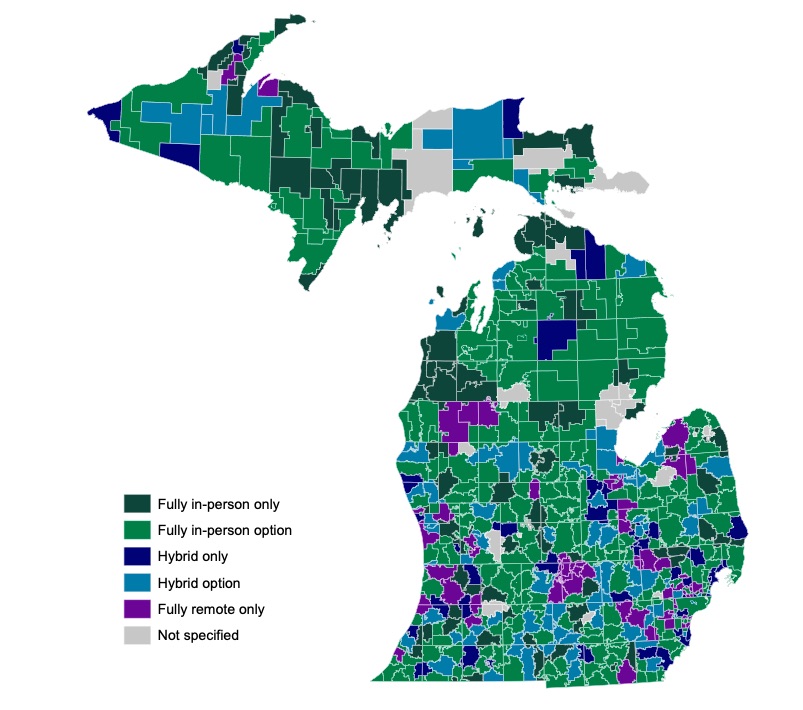Of Michigan’s 823 school districts that provided Return-to-Learn plans, 86% will offer some or all instruction in person at the beginning of the school year, according to a new report from Michigan State University’s Education Policy Innovation Collaborative.
Additionally, the report found that 59% of Michigan school districts are offering students at least the option to return to school five days a week, and 27% of districts are providing students with the ability to return to school at least two to three days a week.
Researchers from EPIC collaborated with the Michigan Department of Education to read, analyze and code contents of 823 Return-to-Learn plans submitted by Michigan school districts as of Aug. 17, 2020, which represent 99% of all 832 traditional and charter school districts in the state.
The study identified the various modes of instruction districts are planning to provide to begin the school year: fully in-person, fully remote/online or a hybrid.
The report also looked at the eight Michigan Economic Recovery Council Regions identified in Gov. Gretchen Whitmer’s Michigan Safe Start Plan, said Katharine Strunk, EPIC faculty director and professor of education policy in MSU’s College of Education.

“There are regional patterns in districts’ reopening,” Strunk said. “For instance, districts in Contained Phase 5 of the Michigan Safe Start Plan are more likely to offer fully in-person or the option for in-person schooling. By contrast, over a quarter of districts in the Lansing region plan to offer all instruction remotely, and districts in the Detroit region are twice as likely as districts across the state to offer hybrid instruction.”
State Superintendent Michael Rice said districts must craft and implement plans that best serve the needs of their individual communities.
“Even schools and districts that are largely educating children at a distance may still provide in-school instruction for small groups of children with profound special needs, beginning English language learners, emerging or fledgling readers and others who will struggle with remote or virtual instruction,” Rice said. “We must do what we can, where and when we can, to meet the needs of our most educationally vulnerable students. These young people require our special reflection and attention.”
Strunk agrees and in fact co-authored a set of recommendations for policymakers to consider as the country’s schools navigate the current crisis.
“The pandemic is disproportionately harming groups that are traditionally less well served by our schools across the country, including low-income students, students of color, students with disabilities, English language learners and homeless students. It is critical that we support these young people, even, or especially, in the midst of a pandemic,” Strunk said.
Collaborators on the report include Tara Kilbride, Emily Mohr and Melissa Lovitz, all with EPIC.
EPIC partners with the Michigan Department of Education and local school districts to craft a tailored research agenda that explores the specific questions and issues education policymakers and practitioners grapple with today.
